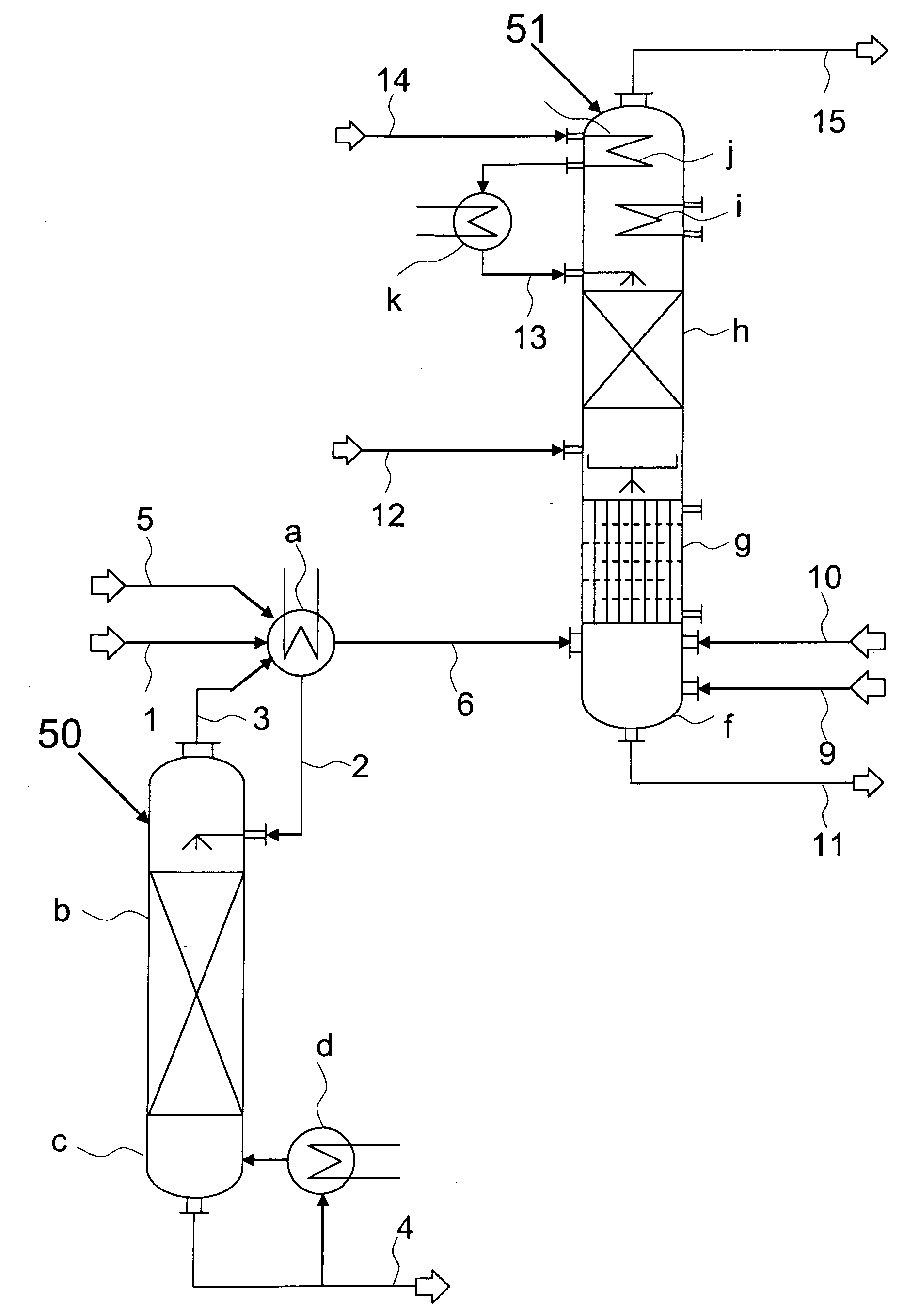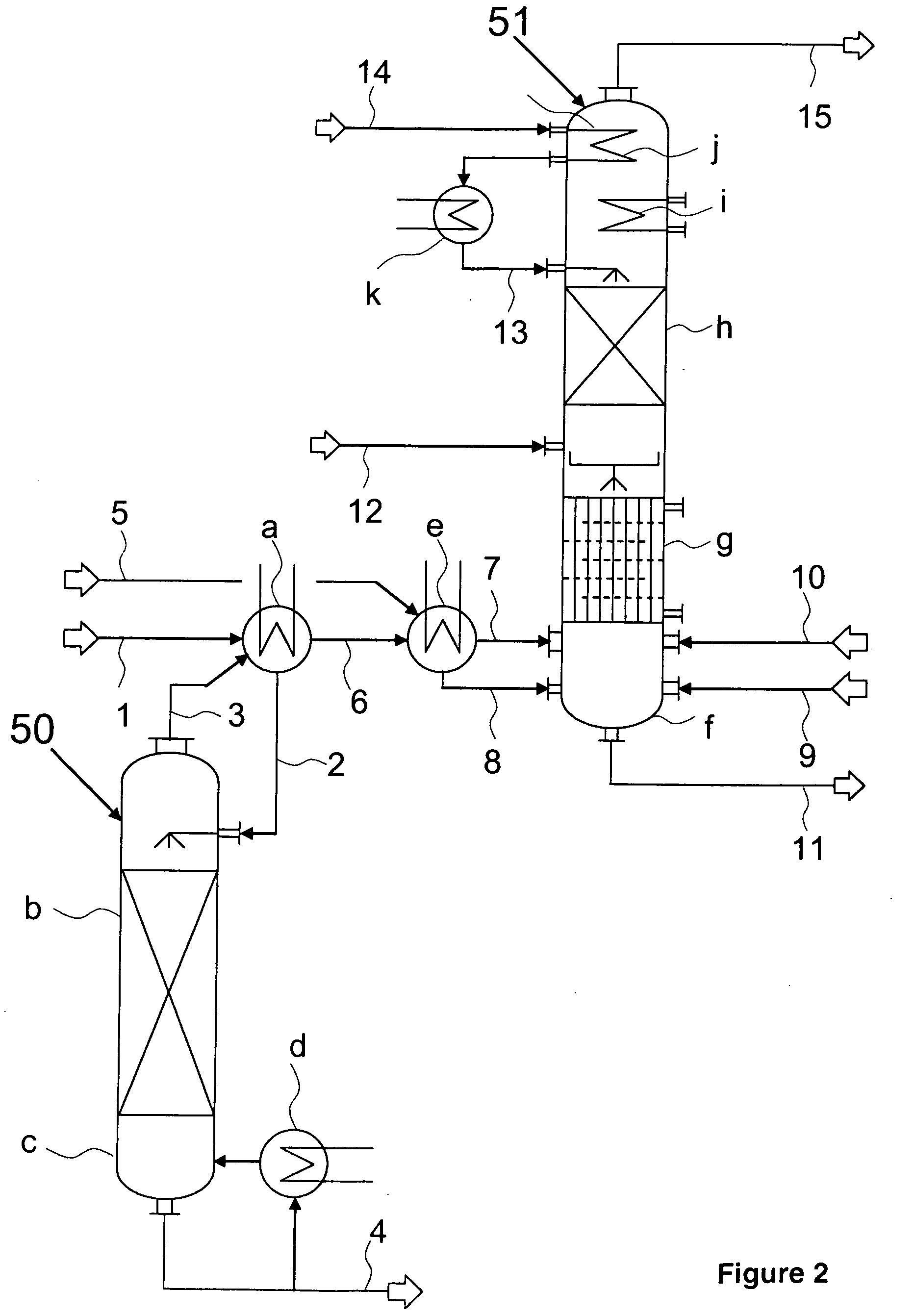Process for the preparation of isocyanates
a technology of isocyanates and isocyanates, which is applied in the preparation of isocyanic acid derivatives, isocyanic acid purification/separation, instruments, etc., can solve the problems of promoting disadvantageous amine hydrochloride formation in amine phosgenation, accelerate reaction, and disadvantage in energy, so as to promote disadvantageous amine hydrochloride formation, increase risk potential, and energy disadvantage
- Summary
- Abstract
- Description
- Claims
- Application Information
AI Technical Summary
Benefits of technology
Problems solved by technology
Method used
Image
Examples
examples
[0100]a) The preparation of isocyanate and the separation, carried out thereby, of a stream containing hydrogen chloride, phosgene, solvent, and low boilers and inert substances, which is formed in the reaction of aliphatic or aromatic amines with phosgene to give the corresponding isocyanates in a reaction stage corresponding to the prior art, is carried out by the process according to the invention. The separation is thereby carried out by a two-stage partial condensation, wherein the condensation product from the first stage of the partial condensation is introduced as feed at the top of a stripping column, the bottom product of the stripping column is fed back to the fresh solvent tank, and the top vapors of the stripping column are passed back into the first stage of the partial condensation again, and the totality of the vapors from the first partial condensation are fed into the second partial condensation, subsequent partial isothermal absorption of the phosgene with chlorob...
PUM
| Property | Measurement | Unit |
|---|---|---|
| temperatures | aaaaa | aaaaa |
| temperatures | aaaaa | aaaaa |
| pressure | aaaaa | aaaaa |
Abstract
Description
Claims
Application Information
 Login to View More
Login to View More - R&D
- Intellectual Property
- Life Sciences
- Materials
- Tech Scout
- Unparalleled Data Quality
- Higher Quality Content
- 60% Fewer Hallucinations
Browse by: Latest US Patents, China's latest patents, Technical Efficacy Thesaurus, Application Domain, Technology Topic, Popular Technical Reports.
© 2025 PatSnap. All rights reserved.Legal|Privacy policy|Modern Slavery Act Transparency Statement|Sitemap|About US| Contact US: help@patsnap.com



